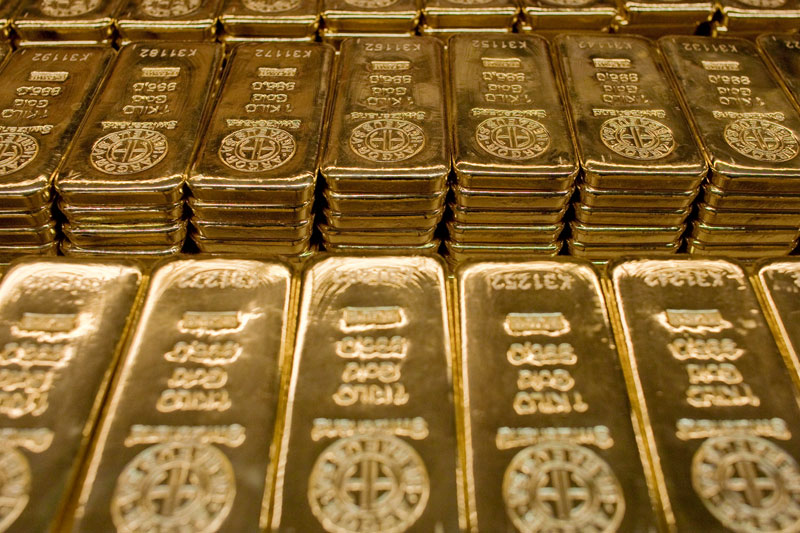Investing.com - Gold futures rallied on Tuesday, as steep losses in global equity markets supported demand for the yellow metal.
Gold for December delivery on the Comex division of the New York Mercantile Exchange jumped $10.40, or 0.92%, to trade at $1,142.90 a troy ounce during European morning hours. A day earlier, gold dipped $1.50, or 0.13%.
Asian shares dropped on Tuesday, with the Shanghai Composite falling 1.2% as appetite for riskier assets weakened after a pair of reports on China's manufacturing sector added to indications that the world's second largest economy is losing momentum.
In Europe, Germany's DAX crashed more than 2.5%, while the Dow and S&P 500 futures signaled a drop of at least 2% at the open, as fears of a China-led global economic slowdown spooked traders and rattled sentiment.
Financial markets have been roiled since China devalued the yuan on August 11, sparking a selloff in equities, commodities and emerging-market assets.
Meanwhile, investors looked ahead to Friday’s U.S. jobs report for August, which could help to provide clarity on the likelihood of a near-term interest rate hike.
The consensus forecast is that the data will show jobs growth of 220,000 last month, following an increase of 215,000 in July, while the unemployment rate is forecast to decline to 5.2% from 5.3%.
Monthly jobs gains above 200,000 are seen by economists as consistent with strong employment growth.
A strong U.S. nonfarm payrolls report was likely to add to indications that the Federal Reserve will raise rates in September, instead of December, while a weak number could undermine the argument for an early rate hike.
Later in the session, the U.S. Institute of Supply Management is to report on manufacturing growth.
The timing of a Fed rate hike has been a constant source of debate in the markets in recent months.
Gold fell to a five-and-a-half year low of $1,072.30 on July 24 amid speculation the Fed will raise interest rates in September for the first time since 2006.
Expectations of higher borrowing rates going forward is considered bearish for gold, as the precious metal struggles to compete with yield-bearing assets when rates are on the rise.
Elsewhere in metals trading, copper for December delivery on the Comex division of the New York Mercantile Exchange slumped 2.4 cents, or 1.03%, to trade at $2.314 a pound as worries over China's slowing economy dampened demand for the red metal.
The final Caixin/Markit manufacturing purchasing managers’ index for August came in at 47.3, the lowest reading since March 2009.
Meanwhile, the official China's manufacturing purchasing managers' index inched down to 49.7 last month from 50.0 in July, the weakest level since August 2012.
A reading below 50.0 indicates industry contraction. Copper traders view Chinese factory activity as an indicator of the nation's copper demand, as the red metal is widely used by the sector.
Copper prices sank to a six-year low of $2.202 on August 24 as concerns over the health of China's economy and steep declines on Chinese stock markets dampened appetite for the red metal.
The Asian nation is the world’s largest copper consumer, accounting for almost 40% of world consumption last year.
